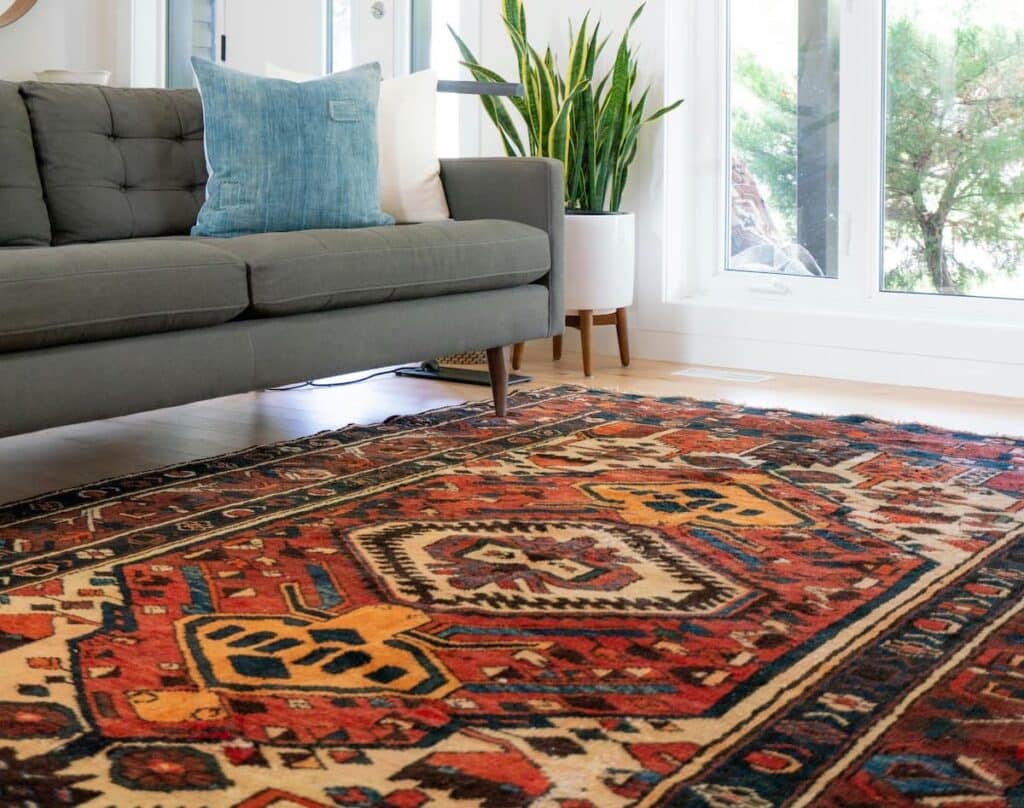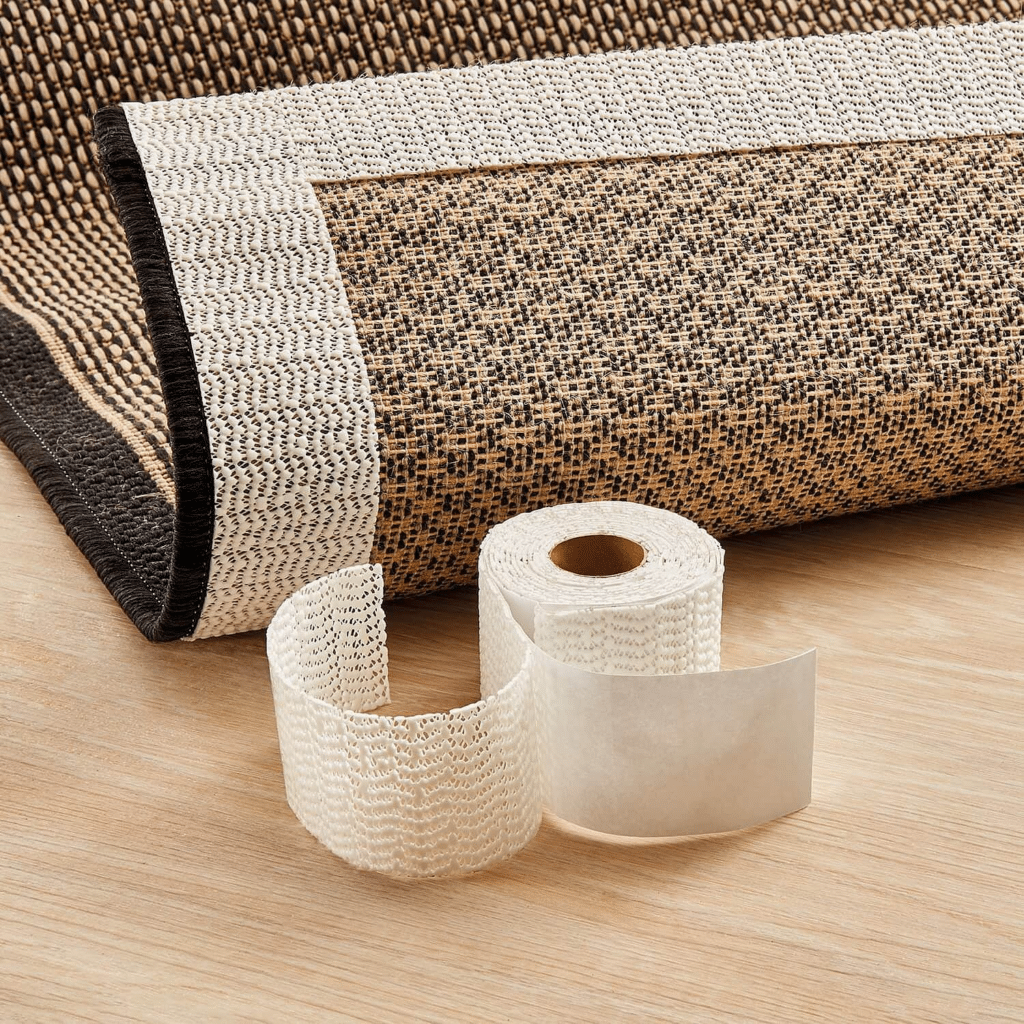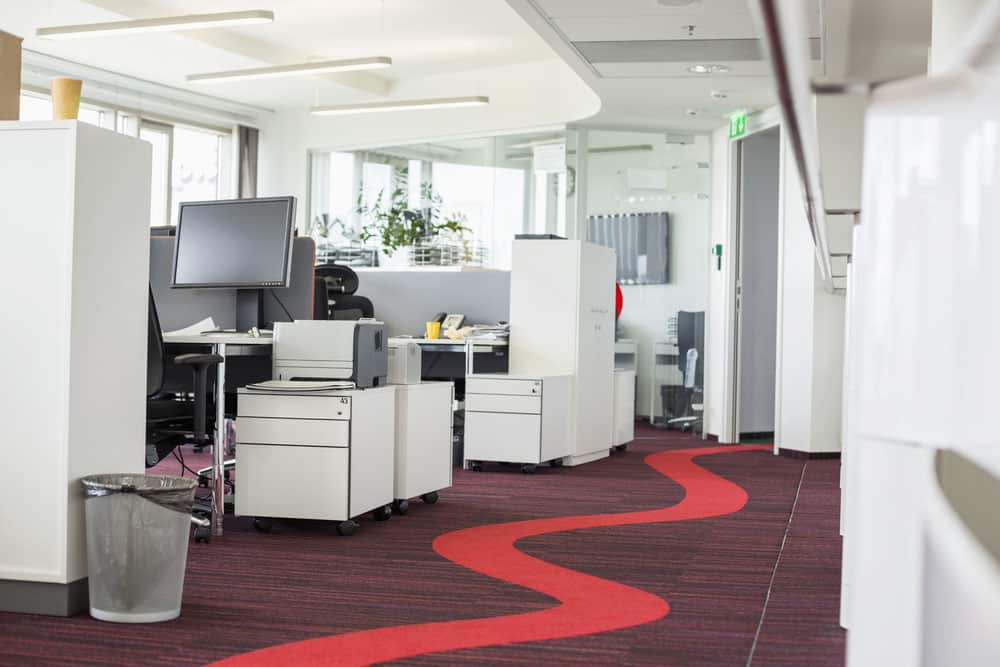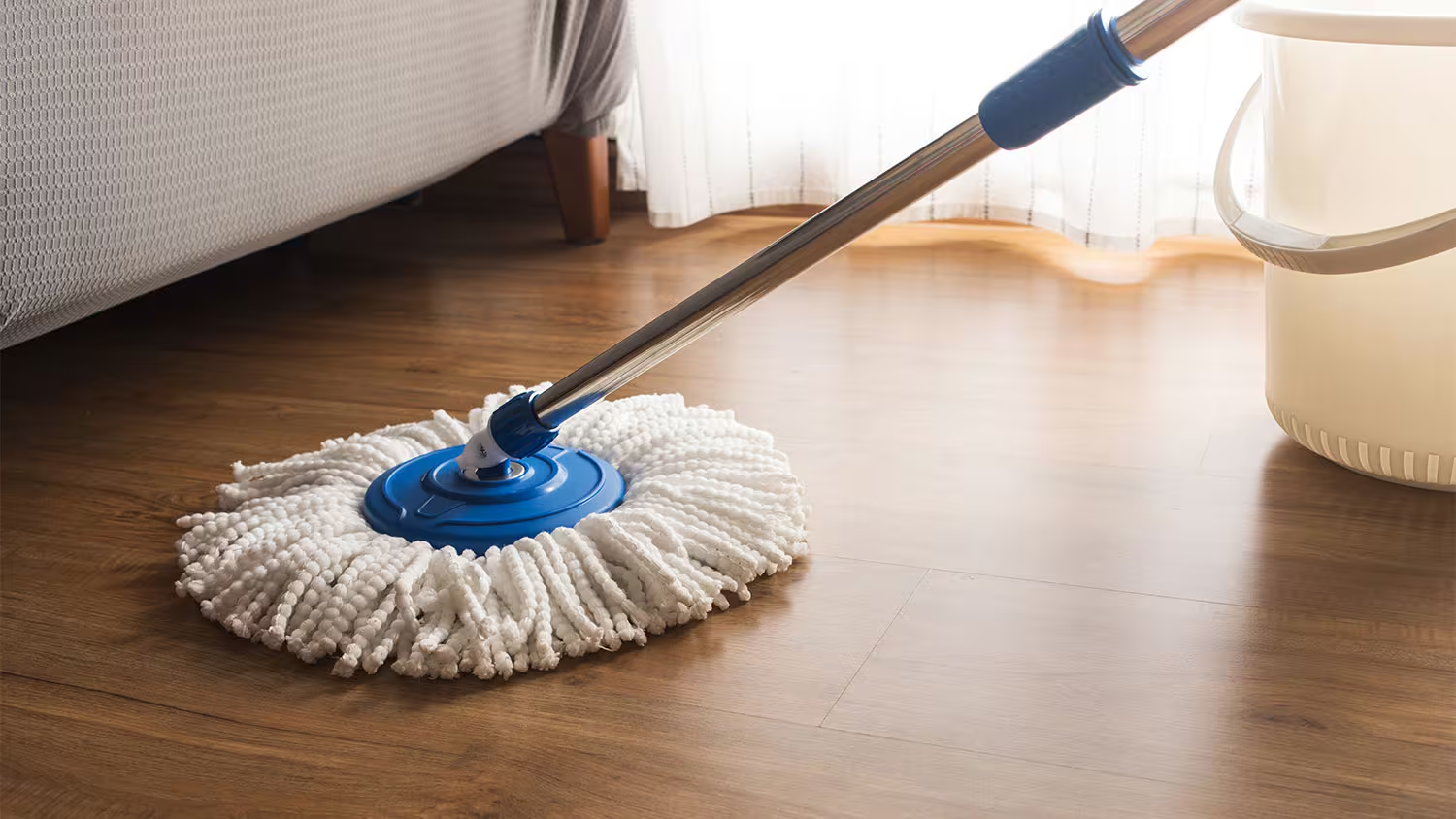Rugs can be a beautiful addition to a room, and in the immortal words of The Dude, can really tie a room together. But with adults, kids, and dogs constantly traipsing up and down them, they quickly become dislodged from their place on your home carpet floors, ending up as crooked as a tobacco lobbyist. This is especially true if your rug is a little lighter than usual.
Thankfully, there’s plenty of cheap ways to keep your rugs in place. In this article, we’ll explore how to stop rugs moving on carpet, so that you can keep your elegant rug in the right spot.
Why Securing Rugs Matters
Slipping rugs pose safety risks, particularly for children, the elderly, and pets, increasing the likelihood of falls and injuries. They also lead to frustration and time-consuming adjustments.
Beyond safety, a secured rug enhances the home’s aesthetics, ensures comfort, and prevents damage to flooring and furniture. Anchoring rugs is essential for maintaining a safe, organised, and visually appealing living space.

Why Do Rugs Move on Carpets?
The main reason rugs move on carpets due to the shifting of the carpet pile under foot pressure, which transfers motion to the rug. Longer or plushier carpet fibers create less grip, increasing movement. On hard floors like vinyl planks or timber floors, the lack of friction between smooth surfaces and the rug backing causes sliding. Recognising these dynamics helps in choosing effective solutions.
Understanding why rugs move is the first step to solving the problem. Whether it’s caused by shifting carpet piles underfoot or the slippery surface of hard floors, the underlying issue is the lack of grip between the rug and the surface below. Fortunately, a variety of solutions are available to keep your rugs securely in place.
Non-Slip Underlay
The most effective way to stop rugs from moving on carpet is with a non-slip underlay, usually sold in rolls. Here are a couple that we recommend:
Rug Gripper Roll
Rug Gripper Roll is anti-slip tape that prevents rugs and mats from sliding across the floor. It’s fixed with non-damaging adhesive tape, and is a great way to prevent your rugs from slipping out of position.

Rug Underlay
This is another type of grippy underlay that prevents rugs from slipping, and is much cheaper than the option above. It’s super easy to install, and works well.
Double-Sided Tape
Another way to stop rugs moving on carpets is with double-sided tape. As with non-slip underlay, double-sided tape is simply fastened to the carpet underneath, and helps to provide grip to the rug placed over it.
Anti-Slip Mats
Anti-slip mats are similar to non-slip underlay, but they’re much larger in size, and aren’t fixed to the floor. Despite this, they can help to provide the grip needed to prevent a rug from slipping. If you opt for a thicker option, there’s the added benefit of extra padding underfoot.
Anti-slip mats are often sold pre-sized, but some carpet stores will cut them to measure for you, in which case you’ll need to quickly measure your rug.
Add Caulk To The Underside Of The Rug
Caulking is a fibrous material used to seal joints and seams, and can also be applied to the underside of a rug, to give it extra grip. You’ll just need to add the caulk to the edges of the rug, and a few lines across the middle. Once set, it’ll help to grip the rug to the carpet and keep it in place.
This solution is best for cheaper rugs, just in case the caulk seeps through.
Furniture
Rugs can look great when placed underneath furniture—dining tables, coffee tables, or whatever suits. This is a free solution to your problem.
Buy A Matt With A Grippy Backing
Some matts and rugs have grippy backing added to their underside, to prevent them from slipping. This can include a flat non-slip rubber, which does a decent job, or rubber with cleats included, which does a fantastic job of holding the rug in place.
Room-Specific Considerations
Different rooms in your home have unique requirements for rug stability based on their function, foot traffic, and flooring type. By tailoring your solution to the specific needs of each space, you can ensure both practicality and aesthetic appeal:
- High-Traffic Areas: These spaces, such as hallways and living rooms, benefit from non-slip pads or heavy-duty corner grippers to withstand constant movement and pressure.
- Bedrooms: For comfort and a cosy feel, padded underlays work best, offering additional cushioning and preventing slippage.
- Kitchens and Entryways: Rubber-backed rugs are ideal for these areas as they provide strong grip, are easy to clean, and prevent accidents in frequently used spaces.
Adapting your approach to each room ensures your rugs stay securely in place while complementing the functionality and style of your home.






